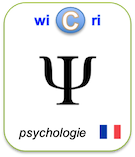Hallucinations in Parkinson's disease: prevalence, phenomenology and risk factors.
Identifieur interne : 000096 ( Ncbi/Merge ); précédent : 000095; suivant : 000097Hallucinations in Parkinson's disease: prevalence, phenomenology and risk factors.
Auteurs : G. Fénelon [France] ; F. Mahieux ; R. Huon ; M. ZiéglerSource :
- Brain : a journal of neurology [ 0006-8950 ] ; 2000.
English descriptors
- KwdEn :
- MESH :
- epidemiology : Hallucinations.
- etiology : Hallucinations.
- psychology : Hallucinations, Parkinson Disease.
- Aged, Female, Humans, Incidence, Male, Middle Aged, Risk Factors.
Abstract
Hallucinations, mainly of a visual nature, are considered to affect about one-quarter of patients with Parkinson's disease. They are commonly viewed as a side-effect of antiparkinsonian treatment, but other factors may be involved. The aim of this study was to determine the phenomenology, prevalence and risk factors of hallucinations in Parkinson's disease. Two-hundred and sixteen consecutive patients fulfilling clinical criteria for Parkinson's disease were studied. Demographic and clinical variables were recorded, including motor and cognitive status, depressive symptoms and sleep-wake disturbances. Patients with and without hallucinations were compared using non-parametric tests, and logistic regression was applied to significant data. Hallucinations had been present during the previous 3 months in 39.8% of the patients, and fell into three categories: minor forms, consisting of a sensation of a presence (person), a sideways passage (commonly of an animal) or illusions were present in 25.5% of the patients (an isolated occurrence in 14.3%), formed visual hallucinations were present in 22.2% (isolated in 9.3%) and auditory hallucinations were present in 9.7% (isolated in 2.3%). Patients with minor hallucinations had a higher depression score than non-hallucinators but did not differ in other respects. Logistic regression analysis identified three factors independently predictive of formed visual hallucinations: severe cognitive disorders, daytime somnolence and a long duration of Parkinson's disease. These findings indicate that, when minor hallucinations are included, the total prevalence is much higher than previously reported. A simple side-effect of dopaminergic treatment is not sufficient to explain the occurrence of all visual hallucinations. The main risk factor in treated patients is cognitive impairment, although sleep-wake cycle disturbances, and possibly other factors related to the duration of the disease, act as cofactors.
PubMed: 10734005
Links toward previous steps (curation, corpus...)
- to stream PubMed, to step Corpus: 001329
- to stream PubMed, to step Curation: 001288
- to stream PubMed, to step Checkpoint: 001288
Links to Exploration step
pubmed:10734005Le document en format XML
<record><TEI><teiHeader><fileDesc><titleStmt><title xml:lang="en">Hallucinations in Parkinson's disease: prevalence, phenomenology and risk factors.</title><author><name sortKey="Fenelon, G" sort="Fenelon, G" uniqKey="Fenelon G" first="G" last="Fénelon">G. Fénelon</name><affiliation wicri:level="3"><nlm:affiliation>Department of Neurology, Hôpital Tenon, Paris, France. gilles.fenelon@tnn.ap-hop-paris.fr</nlm:affiliation><country xml:lang="fr">France</country><wicri:regionArea>Department of Neurology, Hôpital Tenon, Paris</wicri:regionArea><placeName><region type="region">Île-de-France</region><region type="old region">Île-de-France</region><settlement type="city">Paris</settlement></placeName></affiliation></author><author><name sortKey="Mahieux, F" sort="Mahieux, F" uniqKey="Mahieux F" first="F" last="Mahieux">F. Mahieux</name></author><author><name sortKey="Huon, R" sort="Huon, R" uniqKey="Huon R" first="R" last="Huon">R. Huon</name></author><author><name sortKey="Ziegler, M" sort="Ziegler, M" uniqKey="Ziegler M" first="M" last="Ziégler">M. Ziégler</name></author></titleStmt><publicationStmt><idno type="wicri:source">PubMed</idno><date when="2000">2000</date><idno type="RBID">pubmed:10734005</idno><idno type="pmid">10734005</idno><idno type="wicri:Area/PubMed/Corpus">001329</idno><idno type="wicri:explorRef" wicri:stream="PubMed" wicri:step="Corpus" wicri:corpus="PubMed">001329</idno><idno type="wicri:Area/PubMed/Curation">001288</idno><idno type="wicri:explorRef" wicri:stream="PubMed" wicri:step="Curation">001288</idno><idno type="wicri:Area/PubMed/Checkpoint">001288</idno><idno type="wicri:explorRef" wicri:stream="Checkpoint" wicri:step="PubMed">001288</idno><idno type="wicri:Area/Ncbi/Merge">000096</idno></publicationStmt><sourceDesc><biblStruct><analytic><title xml:lang="en">Hallucinations in Parkinson's disease: prevalence, phenomenology and risk factors.</title><author><name sortKey="Fenelon, G" sort="Fenelon, G" uniqKey="Fenelon G" first="G" last="Fénelon">G. Fénelon</name><affiliation wicri:level="3"><nlm:affiliation>Department of Neurology, Hôpital Tenon, Paris, France. gilles.fenelon@tnn.ap-hop-paris.fr</nlm:affiliation><country xml:lang="fr">France</country><wicri:regionArea>Department of Neurology, Hôpital Tenon, Paris</wicri:regionArea><placeName><region type="region">Île-de-France</region><region type="old region">Île-de-France</region><settlement type="city">Paris</settlement></placeName></affiliation></author><author><name sortKey="Mahieux, F" sort="Mahieux, F" uniqKey="Mahieux F" first="F" last="Mahieux">F. Mahieux</name></author><author><name sortKey="Huon, R" sort="Huon, R" uniqKey="Huon R" first="R" last="Huon">R. Huon</name></author><author><name sortKey="Ziegler, M" sort="Ziegler, M" uniqKey="Ziegler M" first="M" last="Ziégler">M. Ziégler</name></author></analytic><series><title level="j">Brain : a journal of neurology</title><idno type="ISSN">0006-8950</idno><imprint><date when="2000" type="published">2000</date></imprint></series></biblStruct></sourceDesc></fileDesc><profileDesc><textClass><keywords scheme="KwdEn" xml:lang="en"><term>Aged</term><term>Female</term><term>Hallucinations (epidemiology)</term><term>Hallucinations (etiology)</term><term>Hallucinations (psychology)</term><term>Humans</term><term>Incidence</term><term>Male</term><term>Middle Aged</term><term>Parkinson Disease (psychology)</term><term>Risk Factors</term></keywords><keywords scheme="MESH" qualifier="epidemiology" xml:lang="en"><term>Hallucinations</term></keywords><keywords scheme="MESH" qualifier="etiology" xml:lang="en"><term>Hallucinations</term></keywords><keywords scheme="MESH" qualifier="psychology" xml:lang="en"><term>Hallucinations</term><term>Parkinson Disease</term></keywords><keywords scheme="MESH" xml:lang="en"><term>Aged</term><term>Female</term><term>Humans</term><term>Incidence</term><term>Male</term><term>Middle Aged</term><term>Risk Factors</term></keywords></textClass></profileDesc></teiHeader><front><div type="abstract" xml:lang="en">Hallucinations, mainly of a visual nature, are considered to affect about one-quarter of patients with Parkinson's disease. They are commonly viewed as a side-effect of antiparkinsonian treatment, but other factors may be involved. The aim of this study was to determine the phenomenology, prevalence and risk factors of hallucinations in Parkinson's disease. Two-hundred and sixteen consecutive patients fulfilling clinical criteria for Parkinson's disease were studied. Demographic and clinical variables were recorded, including motor and cognitive status, depressive symptoms and sleep-wake disturbances. Patients with and without hallucinations were compared using non-parametric tests, and logistic regression was applied to significant data. Hallucinations had been present during the previous 3 months in 39.8% of the patients, and fell into three categories: minor forms, consisting of a sensation of a presence (person), a sideways passage (commonly of an animal) or illusions were present in 25.5% of the patients (an isolated occurrence in 14.3%), formed visual hallucinations were present in 22.2% (isolated in 9.3%) and auditory hallucinations were present in 9.7% (isolated in 2.3%). Patients with minor hallucinations had a higher depression score than non-hallucinators but did not differ in other respects. Logistic regression analysis identified three factors independently predictive of formed visual hallucinations: severe cognitive disorders, daytime somnolence and a long duration of Parkinson's disease. These findings indicate that, when minor hallucinations are included, the total prevalence is much higher than previously reported. A simple side-effect of dopaminergic treatment is not sufficient to explain the occurrence of all visual hallucinations. The main risk factor in treated patients is cognitive impairment, although sleep-wake cycle disturbances, and possibly other factors related to the duration of the disease, act as cofactors.</div></front></TEI><pubmed><MedlineCitation Status="MEDLINE" Owner="NLM"><PMID Version="1">10734005</PMID><DateCreated><Year>2000</Year><Month>04</Month><Day>28</Day></DateCreated><DateCompleted><Year>2000</Year><Month>04</Month><Day>28</Day></DateCompleted><DateRevised><Year>2004</Year><Month>11</Month><Day>17</Day></DateRevised><Article PubModel="Print"><Journal><ISSN IssnType="Print">0006-8950</ISSN><JournalIssue CitedMedium="Print"><Volume>123 ( Pt 4)</Volume><PubDate><Year>2000</Year><Month>Apr</Month></PubDate></JournalIssue><Title>Brain : a journal of neurology</Title><ISOAbbreviation>Brain</ISOAbbreviation></Journal><ArticleTitle>Hallucinations in Parkinson's disease: prevalence, phenomenology and risk factors.</ArticleTitle><Pagination><MedlinePgn>733-45</MedlinePgn></Pagination><Abstract><AbstractText>Hallucinations, mainly of a visual nature, are considered to affect about one-quarter of patients with Parkinson's disease. They are commonly viewed as a side-effect of antiparkinsonian treatment, but other factors may be involved. The aim of this study was to determine the phenomenology, prevalence and risk factors of hallucinations in Parkinson's disease. Two-hundred and sixteen consecutive patients fulfilling clinical criteria for Parkinson's disease were studied. Demographic and clinical variables were recorded, including motor and cognitive status, depressive symptoms and sleep-wake disturbances. Patients with and without hallucinations were compared using non-parametric tests, and logistic regression was applied to significant data. Hallucinations had been present during the previous 3 months in 39.8% of the patients, and fell into three categories: minor forms, consisting of a sensation of a presence (person), a sideways passage (commonly of an animal) or illusions were present in 25.5% of the patients (an isolated occurrence in 14.3%), formed visual hallucinations were present in 22.2% (isolated in 9.3%) and auditory hallucinations were present in 9.7% (isolated in 2.3%). Patients with minor hallucinations had a higher depression score than non-hallucinators but did not differ in other respects. Logistic regression analysis identified three factors independently predictive of formed visual hallucinations: severe cognitive disorders, daytime somnolence and a long duration of Parkinson's disease. These findings indicate that, when minor hallucinations are included, the total prevalence is much higher than previously reported. A simple side-effect of dopaminergic treatment is not sufficient to explain the occurrence of all visual hallucinations. The main risk factor in treated patients is cognitive impairment, although sleep-wake cycle disturbances, and possibly other factors related to the duration of the disease, act as cofactors.</AbstractText></Abstract><AuthorList CompleteYN="Y"><Author ValidYN="Y"><LastName>Fénelon</LastName><ForeName>G</ForeName><Initials>G</Initials><AffiliationInfo><Affiliation>Department of Neurology, Hôpital Tenon, Paris, France. gilles.fenelon@tnn.ap-hop-paris.fr</Affiliation></AffiliationInfo></Author><Author ValidYN="Y"><LastName>Mahieux</LastName><ForeName>F</ForeName><Initials>F</Initials></Author><Author ValidYN="Y"><LastName>Huon</LastName><ForeName>R</ForeName><Initials>R</Initials></Author><Author ValidYN="Y"><LastName>Ziégler</LastName><ForeName>M</ForeName><Initials>M</Initials></Author></AuthorList><Language>eng</Language><PublicationTypeList><PublicationType UI="D002363">Case Reports</PublicationType><PublicationType UI="D016428">Journal Article</PublicationType></PublicationTypeList></Article><MedlineJournalInfo><Country>England</Country><MedlineTA>Brain</MedlineTA><NlmUniqueID>0372537</NlmUniqueID><ISSNLinking>0006-8950</ISSNLinking></MedlineJournalInfo><CitationSubset>AIM</CitationSubset><CitationSubset>IM</CitationSubset><MeshHeadingList><MeshHeading><DescriptorName UI="D000368" MajorTopicYN="N">Aged</DescriptorName></MeshHeading><MeshHeading><DescriptorName UI="D005260" MajorTopicYN="N">Female</DescriptorName></MeshHeading><MeshHeading><DescriptorName UI="D006212" MajorTopicYN="N">Hallucinations</DescriptorName><QualifierName UI="Q000453" MajorTopicYN="N">epidemiology</QualifierName><QualifierName UI="Q000209" MajorTopicYN="Y">etiology</QualifierName><QualifierName UI="Q000523" MajorTopicYN="N">psychology</QualifierName></MeshHeading><MeshHeading><DescriptorName UI="D006801" MajorTopicYN="N">Humans</DescriptorName></MeshHeading><MeshHeading><DescriptorName UI="D015994" MajorTopicYN="N">Incidence</DescriptorName></MeshHeading><MeshHeading><DescriptorName UI="D008297" MajorTopicYN="N">Male</DescriptorName></MeshHeading><MeshHeading><DescriptorName UI="D008875" MajorTopicYN="N">Middle Aged</DescriptorName></MeshHeading><MeshHeading><DescriptorName UI="D010300" MajorTopicYN="N">Parkinson Disease</DescriptorName><QualifierName UI="Q000523" MajorTopicYN="Y">psychology</QualifierName></MeshHeading><MeshHeading><DescriptorName UI="D012307" MajorTopicYN="N">Risk Factors</DescriptorName></MeshHeading></MeshHeadingList></MedlineCitation><PubmedData><History><PubMedPubDate PubStatus="pubmed"><Year>2000</Year><Month>3</Month><Day>29</Day><Hour>9</Hour><Minute>0</Minute></PubMedPubDate><PubMedPubDate PubStatus="medline"><Year>2000</Year><Month>5</Month><Day>8</Day><Hour>9</Hour><Minute>0</Minute></PubMedPubDate><PubMedPubDate PubStatus="entrez"><Year>2000</Year><Month>3</Month><Day>29</Day><Hour>9</Hour><Minute>0</Minute></PubMedPubDate></History><PublicationStatus>ppublish</PublicationStatus><ArticleIdList><ArticleId IdType="pubmed">10734005</ArticleId></ArticleIdList></PubmedData></pubmed><affiliations><list><country><li>France</li></country><region><li>Île-de-France</li></region><settlement><li>Paris</li></settlement></list><tree><noCountry><name sortKey="Huon, R" sort="Huon, R" uniqKey="Huon R" first="R" last="Huon">R. Huon</name><name sortKey="Mahieux, F" sort="Mahieux, F" uniqKey="Mahieux F" first="F" last="Mahieux">F. Mahieux</name><name sortKey="Ziegler, M" sort="Ziegler, M" uniqKey="Ziegler M" first="M" last="Ziégler">M. Ziégler</name></noCountry><country name="France"><region name="Île-de-France"><name sortKey="Fenelon, G" sort="Fenelon, G" uniqKey="Fenelon G" first="G" last="Fénelon">G. Fénelon</name></region></country></tree></affiliations></record>Pour manipuler ce document sous Unix (Dilib)
EXPLOR_STEP=$WICRI_ROOT/Wicri/Sante/explor/ParkinsonFranceV1/Data/Ncbi/Merge
HfdSelect -h $EXPLOR_STEP/biblio.hfd -nk 000096 | SxmlIndent | more
Ou
HfdSelect -h $EXPLOR_AREA/Data/Ncbi/Merge/biblio.hfd -nk 000096 | SxmlIndent | more
Pour mettre un lien sur cette page dans le réseau Wicri
{{Explor lien
|wiki= Wicri/Sante
|area= ParkinsonFranceV1
|flux= Ncbi
|étape= Merge
|type= RBID
|clé= pubmed:10734005
|texte= Hallucinations in Parkinson's disease: prevalence, phenomenology and risk factors.
}}
Pour générer des pages wiki
HfdIndexSelect -h $EXPLOR_AREA/Data/Ncbi/Merge/RBID.i -Sk "pubmed:10734005" \
| HfdSelect -Kh $EXPLOR_AREA/Data/Ncbi/Merge/biblio.hfd \
| NlmPubMed2Wicri -a ParkinsonFranceV1
|
| This area was generated with Dilib version V0.6.29. | |


